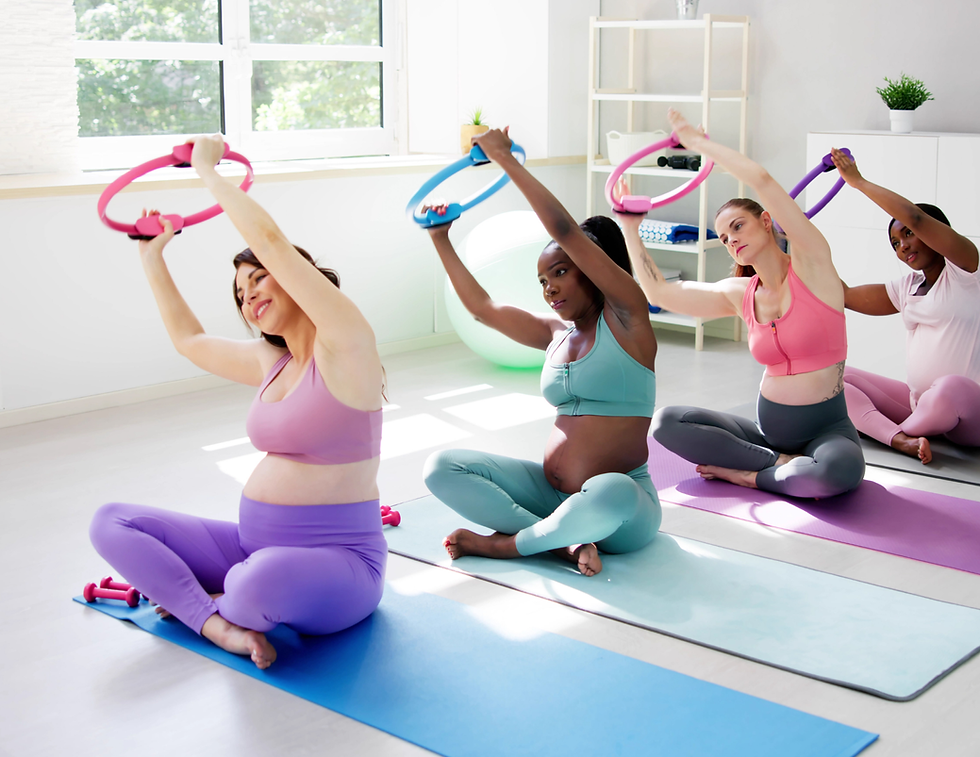How to Exercise Safely with Diastasis Recti
- Coach Dee

- Feb 11
- 2 min read
You CAN exercise with Diastasis Recti!
Diastasis Recti or DRA might sound like a scary diagnosis, but it’s actually a very common occurrence during pregnancy and postpartum. It refers to the separation of your ab muscles along the Linea Alba (that line that runs vertically above and below your belly button).
I like to think of this separation as a helpful adaptation that the body does to accommodate your growing baby. Your abs just wanted to show your baby a little love, right?
Now this doesn’t mean DRA is something we should just ignore, but in most cases, a gentle and intentional exercise program is the perfect start for healing and strengthening those wonderful, caring abs of yours.
Here are some tips to help you get started:
1️⃣ Connect your core with your breath
Draw in and up on your abs as you exhale. Relax as you inhale.
2️⃣ Stack your posture
There’s no one perfect posture, but there are some positions that make it easier to create tension in your abs, like stacking your ribs over your hips.
3️⃣ Manage your pressure
Time your exhale on the hardest part of the exercise to guide pressure up and out of your mouth, rather than out into your abs.
4️⃣ Learn to listen
Notice how your whole body feels during and after an exercise. If something doesn’t feel right, modify or stop.
5️⃣ Get Support
Enlist the help of professional like a certified pre and postnatal practitioner- like me!
Remember, your body is incredible and resilient. With the right guidance and a little patience, you can build strength and confidence in your postpartum body, which means you can spend more time making moments with your little one.
If you want to take the guess work out of your exercise, I've created a simple 15-minute Diastasis and Core Mini Program that will teach how you can help heal your Diastasis symptoms, along with detailed video tutorials of my top 8 proven exercises that have helped my clients heal their core after pregnancy!
Coach Dee
@coachdee_fitness
*This is a fitness and personal training blog for information purposes only and shouldn’t be seen as health, nutritional, or medical advice. This site is not intended to be a substitute for professional medical or health advice, diagnosis or treatment. Any information you use from this site is at your own risk. Never disregard professional advice or delay seeking it because of something you read on this site.
_edited.jpg)



